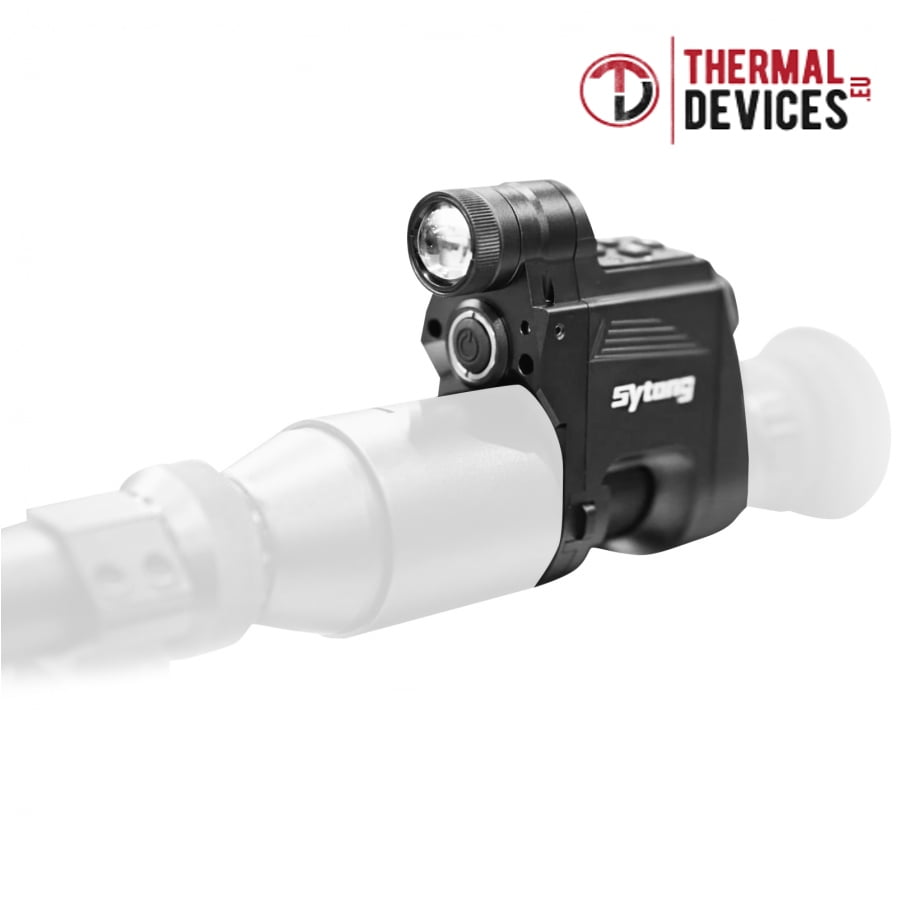We’re glad you’re here for another ThermalDevices.eu article. We’ll be talking about thermal imaging clip-on devices today.
Devices for thermal imaging are within the field of thermal systems. They have a structure that is quite similar to other night vision devices. They are composed of the display, all of the electronics, the sensor, and the objective lens. The primary distinction is that these thermal stems are employed independently of other thermal imaging equipment.
Thermal clip-ons are designed to be used with daylight optics. Attaching thermal imaging clip-on is analogus to attaching a binoculars or monoculars to a riflescope. The user may then utilize their riflescope as a night vision thermal scope while continuing to fire with it.
Be aware that not all European nations permit certain combinations. You should always research your local laws prior to buying anything because of this.
Clearly, using thermal equipment is not limited to in the dark. In reality, they make no distinction in any way. You won’t need to take apart and put back together your riflescope or binoculars irrespective of the time of day after the thermal clip-on is attached.
It’s crucial to understand that the thermal imaging clip-on will alter the field of vision. The user of a clip-on device looks into the screen via the ocular. A pixelated screen will appear if the operator dials up the daylight optical device’s amplification level too high.
However, utilizing the daytime equipment and thermal imaging clip-on together should be simple as as the individual doesn’t extend the image to its maximum size. Nevertheless, only when the country-specific laws allow it, can the user identify warm items and fire.
Now let’s talk about the real manufacturers of these kinds of clip-on devices. One of the well-known businesses that produce items that are reasonably priced and follow European standards is Pulsar. Even though Pulsar had reduced the cost of this equipment as of 2018, anticipate a price reduction once more as Chinese producers penetrate the European market in two to three years.
Already there has been a significant increase in businesses that have integrated thermal imaging clip-ons ,Iray, to their product offerings. For instance, Fortuna provides a range of these goods that are also of excellent quality. Their clip-ons are incredibly lightweight, strong, and compact. Some of the rivals are Lithuania’s Ados Tech, the upscale Canadian GSCI, Armasight, and Dipol.
The distinction between traditional analog night vision clip-ons and thermal imaging one’s is a topic of great interest among clients. To be completely honest, choosing between the two is a tough decision. That is why, we will do our absolute all to highlight the distinctions between the products so that the buyer may make a better educated decision, if not an easier one.
The obvious benefit of thermal imaging clip-on devices is their improved detection range compared to traditional analog night vision clip-ons. Even high-end equipment won’t be able to function past a maximum distance of 250 meters using the latter. Consider the Pulsar Thermal Front Attachment Core FXQ50 as an alternative. An animal will be visible to the customer at 1500 or 1800 meters.
Shooters should pay attention to the second significant distinction. The user will be able to observe what transpires right away after snapping the photo using a thermal imaging clip-on. Suppose the animal retreats into the woods. Without having to change between separate visual gadgets and risk missing important details, the hunter will indeed be capable of keeping up with what is happening.
One more benefit of most clip-on gadgets, whether thermal or digital, is they can be utilized as a monocular when operated by themselves. While purchasing clip-on devices, the ocular component required for stand-alone usage is nearly always included in the package.
Contrary to digital night vision equipment, thermal imaging clip-ons do not degrade over time. Some image amplifying tubes have a set number of running hours, beyond which they start to lose their effectiveness.
The individual is able to capture pictures and record video material with more recent thermal gear. Some may even support live streaming directly. With digital night vision devices, that is not feasible.
The performance of thermal imaging clip-ons is also better in misty meteorological circumstances. When there is haze, certain performance level will indeed be reduced, but this is still better than analog night vision equipment, which would be utterly worthless in the exact same situation.
The animals cannot see the individual using thermal imaging equipment since it doesn’t illuminate any light. On the contrary, analog night vision gadgets can signal the creatures when a person is around as they need an IR illuminator to operate at nighttime.
Let’s now discuss the benefits of analog night vision equipment. They display the cold areas of animals as well. That’s essential for trophy hunters in particular. The animal will have to go quite near for thermal analog equipment with even 50-millimeter lenses, but then again, it will be challenging to view details. But for digital night vision devices, visualizing details is no issue.
With digital night vision equipment, the power usage is also significantly better. A new battery only has to be installed one time per year. In contrast, thermal instruments require regular battery changes due to constant use. That means that the battery capacity is around six to seven hours.
The two gadget groups are extremely comparable in terms of price. With certain exceptions, the typical cost of a thermal imaging clip-on device and a digital night vision device is 4000 euros. The pricing differences between models are exactly as big as those between brand names.
Both thermal imaging clip-on systems and analog night vision ones shouldn’t experience too much recoil when installed on a riflescope. However, thermal imaging clip-ons may have a small bonus in this situation as well, they are resistant to even significant recoil. (For more information, look at how Fortuna evaluates its thermal devices.)
Most of the thermal clip-ons in 2018 use sensors with an average resolution of 380 x 280 pixels. Therefore, such size is typical. Comparatively speaking, better-quality versions already on the market feature sensors with a resolution of 600 x 480 pixels, and they will only become more advanced over time. At the moment, 17 microns is the accepted pixel size.
The majority of sensors will have an 800 x 600 pixel resolution by 2020. A 12 micron pixel size is anticipated.
The displays are no different. The majority of screens at this time are approximately 640×480. They are already available in 860 x 600 pixels on Dipol devices. Therefore, it can be concluded that, development is also happening fairly quickly. We’ll start offering gadgets in less than a year that are already astronomically superior in terms of these parameters.
The Core model of Pulsar’s thermal imaging monocular only offers one color with the choice of either showing hot objects as vibrant green or black. The Helion model from Pulsar has seven distinct color modes.Some other producers, such as Dipol and Fortuna, only display black and white images. This is one more aspect that will probably alter in the future when producers introduce a larger range of colors.
For now, that is all. If you’re looking for additional information about thermal imaging clip-on devices we have a few more articles on our website Visit the page where we discuss Pulsar Core products, clip-on adapters, field tests of several Pulsar Helion monocular models, and more.
We appreciate your time. Please feel encouraged to get in touch with us through email or the comment area below if we left something out. Come back to check new pieces soon.

